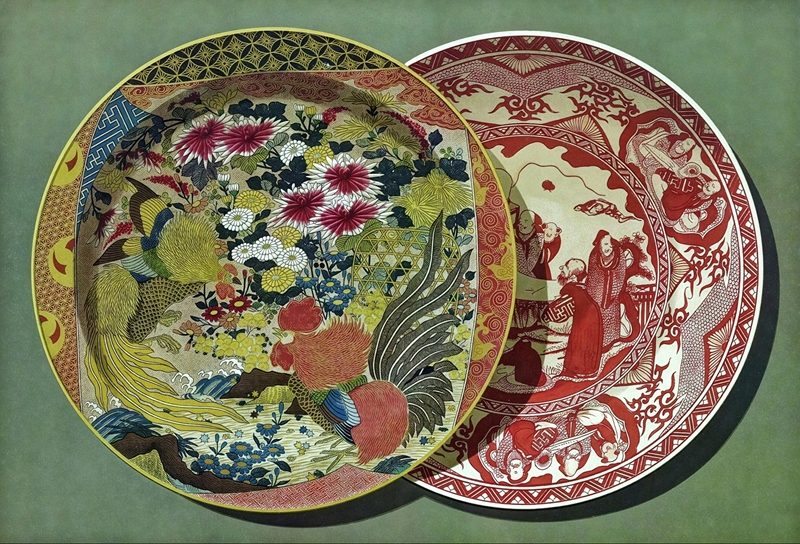
|
|
|
|||||||||
|
|
||||||||||
Kaga ware: two dishes Lithograph, by L. Dulong, published 1875 |
||||||||||
|
Left —
Large dish of late-period piece of Polychromatic Kaga Ware. Many highly
decorated pieces with the Kutani mark have been collected by enthusiasts
both locally and internationally. These pieces differ in some ways from
what was originally thought to be the style used by Kaga artists. The
design and arrangement of the decorative elements are unmistakably
Japanese, and more representative of traditional art than the typical
red and gold works. The colours are vibrant and applied thickly,
creating a raised effect in the decoration, especially with the white
enamel, where the artist has skilfully enhanced the relief. The body, a
dull grey, seems to be stoneware with a thin, glossy finish, and the
entire decoration is applied over the glaze. The ornamentation features
an irregular medallion with fighting cocks and bold floral patterns, as
well as border designs in diaper work, all of which are typical of
Japanese art and reflect the free, expressive style of Japanese artists.
Diameter: 16 inches. |
||||||||||
| Kaga ware hails from Kaga Province, now part of Ishikawa Prefecture, with a history dating back to the 16th century. Known for its intricate designs, it often features floral and natural motifs and is crafted using techniques such as kutani and kutani-yaki glazing. Highly valued for its elegance, Kaga ware is primarily used for tea ceremony utensils, fine dinnerware, and decorative pieces. |
||||||||||









